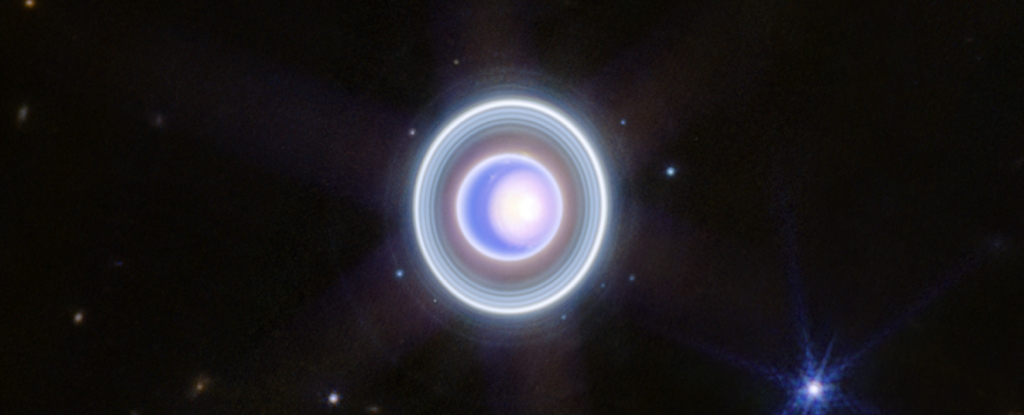
Strange Anomaly in 1986 May Have Warped Our Perception of Uranus
The penultimate planet, our best measurements suggest, has a whole slew of idiosyncrasies. And one of the most puzzling is its magnetic field. According to measurements taken by Voyager 2 when the NASA probe conducted a flyby in 1986, Uranus's magnetosphere is a hot mess – off-center and off-kilter, unlike anything else in the Solar System.
This has informed how we think about Uranus ever since, making the planet's history a mystery scientists have been working to solve.
There's just one problem, says space plasma physicist Jamie Jasinski of NASA's Jet Propulsion Laboratory at the California Institute of Technology: Uranus's magnetic field probably isn't hinky most of the time.
Jasinski and his team have undertaken a new analysis, and discovered that the Voyager 2 flyby probably took place during a brief window when solar activity was messing with Uranus, taking observations inconsistent with the norm.
"The scientific picture of Uranus that we have had since the Voyager 2 flyby is that it has an extreme magnetospheric environment. But I always thought that maybe the Voyager 2 flyby of Uranus just happened to occur during some strange activity rather than it being like that generally," Jasinski told ScienceAlert.
Leave a Comment
Related Posts

Jill Banfield on Twitter: "I repeat- I haven’t been this excited about a discovery since CRISPR. We found something enigmatic that, like CRISPR, is associated with microbial genomes. We have named these unique entities #BORGs"
Comment



















